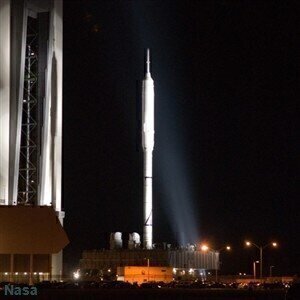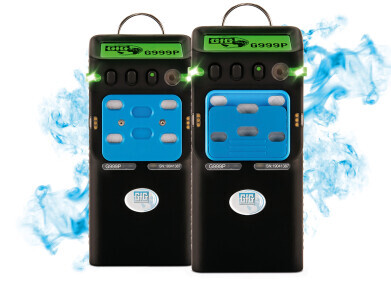Safety
Over-Pressured Wells a Risk for E&P Operators in Deep-Water Gulf of Mexico, Says Joint IHS/GPT Report
Mar 04 2011
In a study designed to evaluate and address exploration and production (E&P) drilling risks associated with over-pressured formations, it was found that dramatically different magnitudes of overpressure existed across all 149 deep-water wells studied in the highly lucrative deep-water U.S. Gulf of Mexico Lower Tertiary Wilcox play. Understanding the variation and magnitude of overpressure is of critical importance, according to the authors of the study, information and insight provider IHS (USA), and pressure consultants GeoPressure Technology Limited (GPT), an Ikon Science Company.
The IHS/GPT Deep-Water Gulf of Mexico Lower Tertiary Wilcox Pressure Study sought to gain an understanding of overpressure in the deep-water Gulf in terms of its distribution and potential impacts on future exploration of the region’s petroleum system. The study examined 149 deep-water Gulf wells, which were extracted from the IHS Pressure Database, a global dataset of re-interpreted, quality controlled, sub-surface formation pressure data.
The study focuses on key wells in Alaminos Canyon, Keathley Canyon, Walker Ridge, Garden Banks, Green Canyon and Atwater Valley, a combined study area that spans offshore acreage covering hundreds of miles across offshore Texas, Louisiana and Mississippi in U.S. federal waters. Water depths in the region range from 4,000 feet to 10,000 feet and the total depths of the wells can exceed 30,000 feet total vertical depth, sub-sea (TVDss). Reservoir pressures in the Wilcox can exceed 20,000 pounds-per-square-inch (psi).
The Lower Tertiary Wilcox trend covered in the study has proven to be a highly successful exploration target, with considerable upside potential of up to 15 billion barrels of recoverable oil reserves, according to IHS estimates.
”What we learned from the study is that overpressure variation has a significant impact throughout the play. Understanding the overpressure variation helps to minimize the drilling risk and inform on future exploration targets,” said Mark Diaz, senior geopressure analyst at IHS, and one of the study authors. “There are a number of operational challenges that exist alongside varying pressure regimes, including high bottom-hole temperatures, complex structural variances, and a canopy of salt that sits over much of the play, which makes the use of seismic data to visualize sub-salt structures largely ineffective.”
“This study gives clients a set of analytical tools and supporting insight that enables them to make sound exploration decisions and minimize the potential risks associated with drilling when they have poor visualisation of the subsurface,” said Sam Green Ph.D., principal technical author of the study for GPT.
According to the report, all of the wells with formation pressure data that were studied indicated overpressure, although the degree of overpressure varied widely. The overpressures in the report ranged from 9.1 pounds-per-gallon Equivalent Mud Weight (ppg EMW) up to 15.7 ppg EMW across the Miocene and Wilcox.
“Calculating those pressures correctly is incredibly important,” Diaz said, “since excessive pressures impact every aspect of the planning process.”
Analysis of the overpressure in the Wilcox showed that the highest overpressures are primarily in eastern Keathley Canyon and across the Walker Ridge protraction areas. The Wilcox data were analyzed with respect to compartmentalisation versus lateral drainage as an explanation for the overpressure variation observed. The overpressure observations made in the Miocene have a significant impact on the sub-salt play as a whole.
Although a number of high-profile discoveries have been made to date in this play, including Cascade, St. Malo and more recently BP’s 2009/10 Tiber well in northwest Keathley Canyon, which is expanding the extent of the play, dry holes such as the Unocal Sardinia project in Keathley Canyon (block 681), and the ExxonMobil Hadrian well in Keathley Canyon (block 919), have proven problematic and costly, noted the report.
“Despite its prospectivity, the play clearly is not fully understood in terms of the petroleum system and its impact on the distribution of hydrocarbons,” said Green.
“Part of this problem lies in the fact that the majority of this play is sub-salt, with the inherent problems of using seismic data to visualise structures below the salt canopy. Even if traps are identified, and the risks assessed for reservoir quality and charge, variable overpressure regimes exist in the sub-salt, which can make drilling these prospects problematic.”
Green added: “As part of this study, we developed a unique set of algorithms to calculate overburden gradients and fracture gradients across the many protraction areas, which aids engineers in the well design and planning process.”
According to IHS estimates, if the U.S. deep-water Gulf of Mexico were a country, it would rank number eight in the world with respect to barrels-of-oil-equivalent (Boe), discovered from 2000 to 2009. In terms of oil discovered during this period, the entire Gulf of Mexico, including the deep-water and shelf regions, would rank number three in the world.
As of the end of October 2010, 6,269 wells were actively producing in the U.S. Gulf of Mexico, of which 486 were deep-water wells (wells exceeding 1,312 feet of water depth, according to the IHS E&P Well and Production Database. So far in 2011, based on IHS data, the U.S. Gulf of Mexico has produced 820 MMBoe. Of that figure, the deep-water Gulf has delivered about 516 MMBoe, or approximately 70 percent of the total production for the entire Gulf.
“As the industry moves into ever deeper water to find larger reserves, over-pressured and high-temperature wells continue to be a significant challenge to safety, productivity and project cost,” said Green.
The IHS/GeoPressure Technology study features a set of maps and plots illustrating overpressures at key stratigraphic ages, as well as a series of focused analyses dealing with topics such as determination of fracture gradients, lithostatic gradients, lateral drainage and an approach for predicting pressure in deep un-drilled compartments, is also included.
Digital Edition
PIN 25.2 Apr/May
April 2024
In this Edition Safety - Carbon monoxide toxic and flammable gas detection Analytical Instrumentation - Density: A fundamental parameter at critical stages within the petroleum sector...
View all digital editions
Events
May 05 2024 Seville, Spain
May 06 2024 Riyadh, Saudi Arabia
May 06 2024 Houston, Tx, USA
May 06 2024 Houston, Tx, USA
Canada Gas & LNG Exhibition & Conference
May 07 2024 Vancouver, BC, Canada


.jpg)















